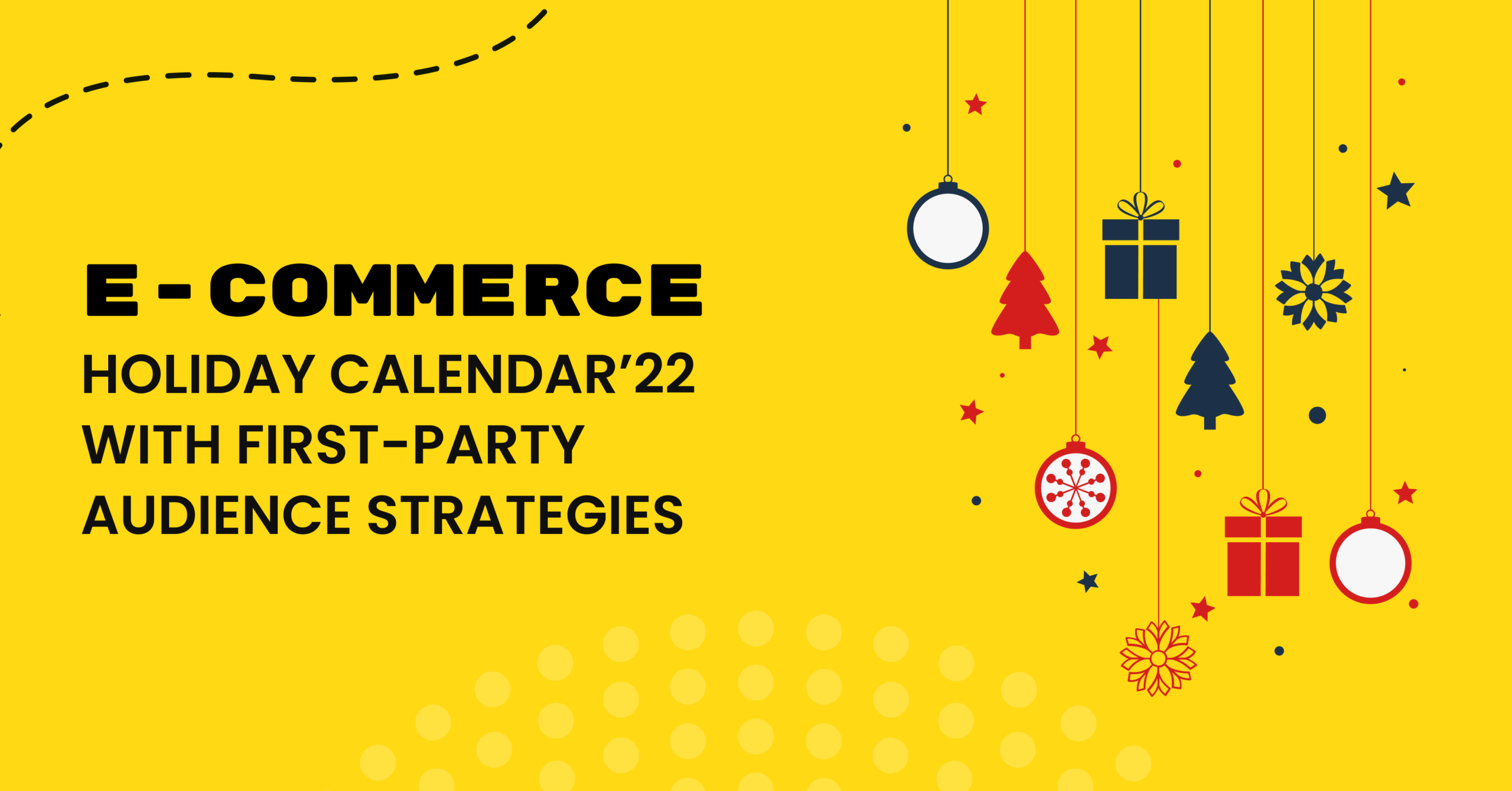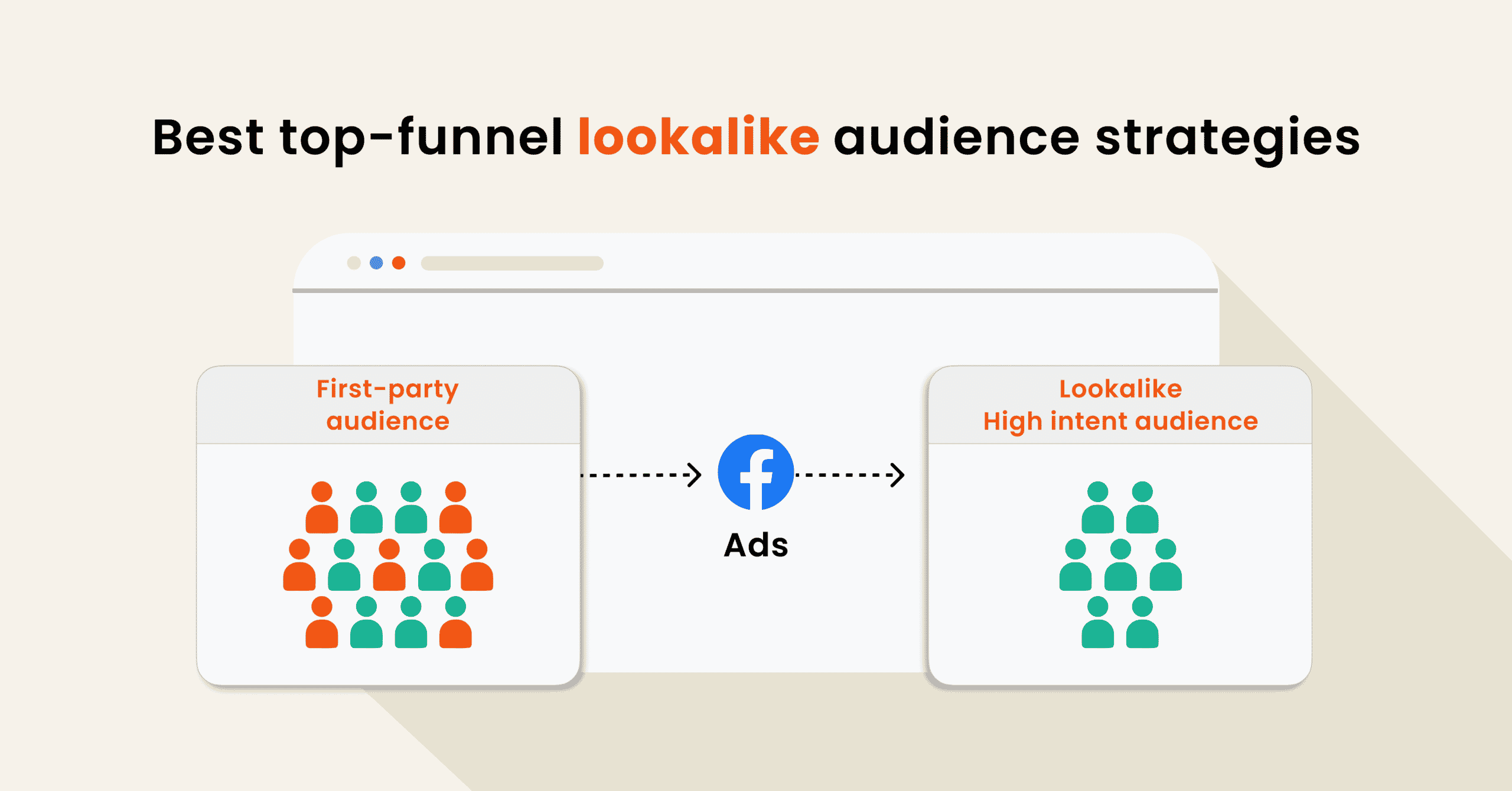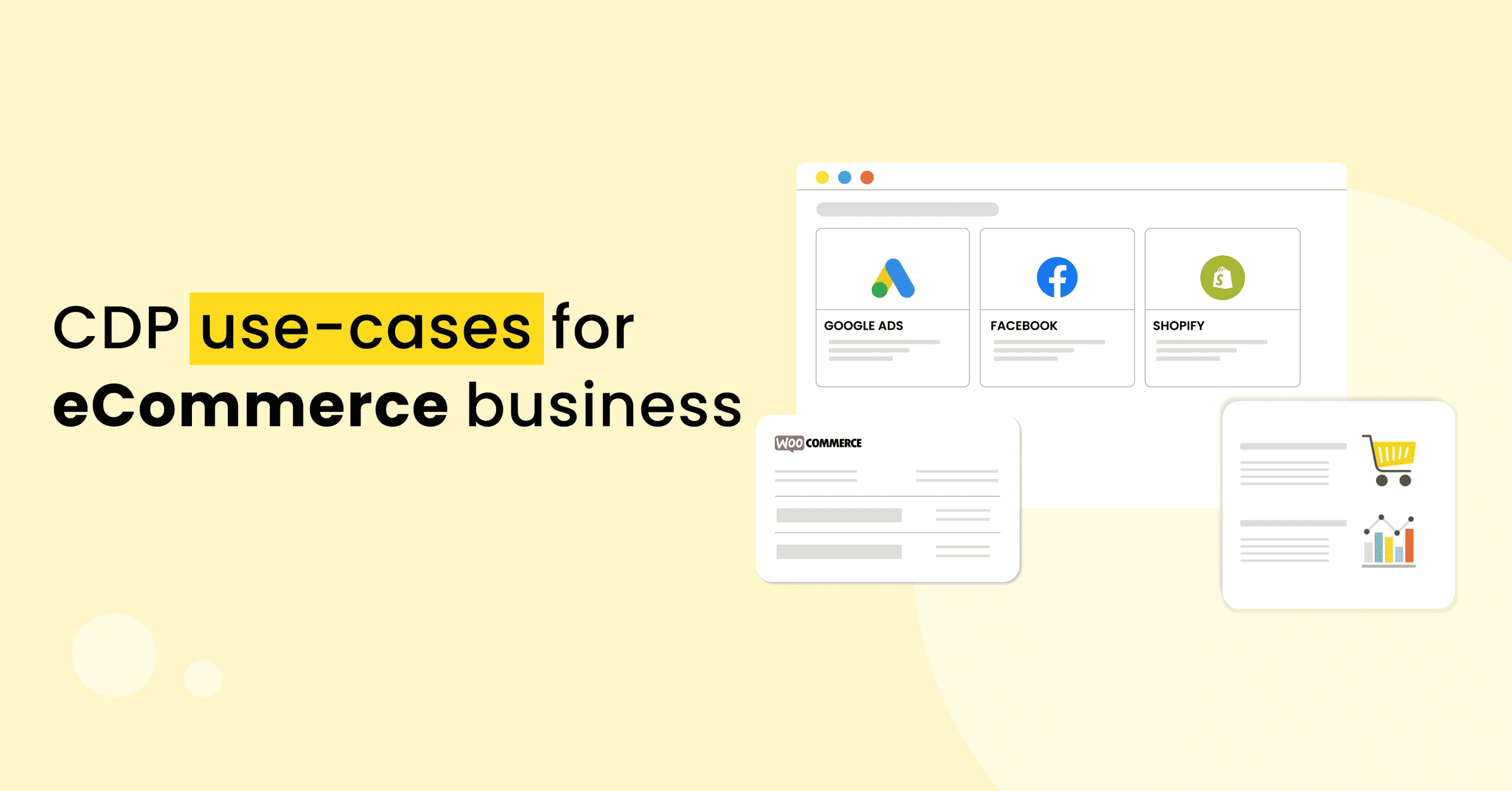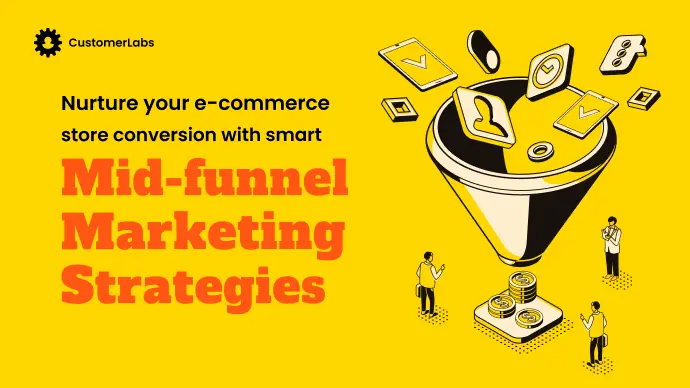
ToFu, MoFu, or BoFu? Any marketer would say focus on the full funnel. But are you actually focussing on all three stages of the funnel? Especially the high-potential mid funnel marketing strategy. You think you are, but most marketers address the known visitors who comprise only 2% of the prospective customers.
The remaining 98% of your anonymous website visitors aren’t given much importance. It is high time that all marketers realize the immense potential the left-out 98% offer.
Using the mid funnel marketing techniques, if you can drive just 2-5% of those majority anonymous users into your bottom funnel, your revenue return on ad spending (ROAS) can go up to 2-3x times.
What is Mid Funnel Marketing?
The marketing funnel is the weapon to convert prospective customers. The customer journey or the marketing funnel is in three stages: the Top, Middle, and Bottom of the Funnel, commonly referred to as ToFu, MoFU & BoFu.
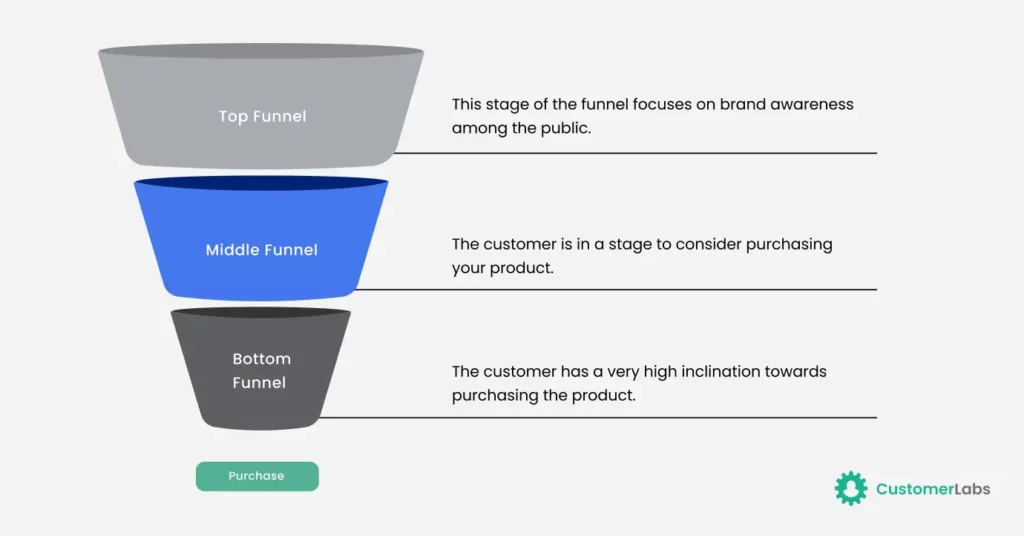
The top funnel is the first stage of the marketing funnel, where the customer is exploring various brands & products. This stage of the funnel focuses on brand awareness among the public.
Middle of the funnel is the second stage of the marketing funnel, where the customer is in a stage to consider purchasing your product.
Bottom-funnel is the final stage of the marketing funnel, where the customer is in the decision stage. The customer has a very high inclination towards purchasing the product.
Current Scenario
As discussed, most marketers focus on the top & bottom funnel that comprises 2% of the known website visitors’ data.
And on top of that, Meta/Facebook’s custom audience match rates dropped to 25% due to
- recent data privacy updates
- Latest iOS 14.5+ updates
- Most browsers disallow third-party cookies
In addition to the above, Google’s announcement to phase out third-party cookies will reduce the ROAS drastically in the future.
And in recent times, most marketers have voiced the decline in ad campaign performance & ROAS, making it evident that the current scenario will not work to sustain in the world of fast-paced marketing.

Why is it Difficult to Target these High-intent Mid-funnel Audiences?
With increasing data privacy updates, the difficulty to retarget the prospective mid-funnel audience increases because
- Unable to collect first-party data consisting of anonymous website visitors.
- Most customers are stuck in the infinite loop of exploration & evaluation.
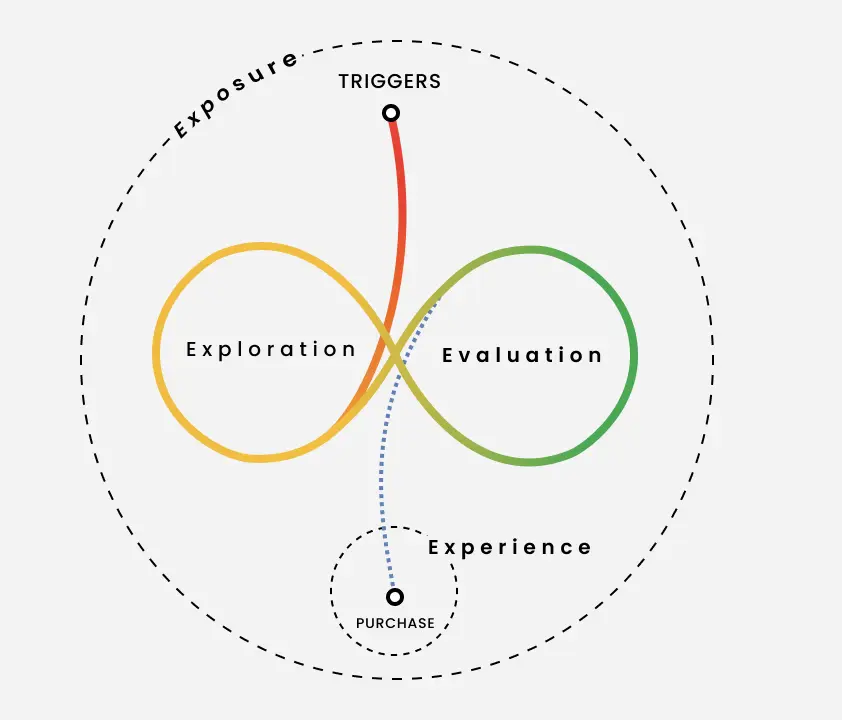
Source: Think With Google
The above loop clearly explains the journey of customers stuck in the messy middle. It is a very complicated stage. Marketers should not force people to exit the loop but provide them with enough resources & information to help them make the right decision. Rather than being a marketer, guide them to make the right purchase by showing the best options available to them.
Nurturing the Messy Middle!
To bring the customers out of the infinite loop and lead them to make a decision you should understand the user and use the mid funnel marketing strategy.
For example, Let us say there is a user who wishlists ripped denim. Now, this user can be nurtured using personalized and engaging content such as
- 10-15% discount offers,
- Show other types of denim,
- create the urgency to purchase,
- social proofs to help with validation
and more reviews on the related products can help the user decide.
Similarly, if a user has added_to_cart/wishlist but has not purchased for more than 3-4 months. Then these audiences can be re-activated with a first-time discount coupon or try experimenting with other influential factors that will help the user make a decision.
But how do you bring that customer into your bottom funnel?

Re-activating Your Mid-funnel Audience
To engage the mid-funnel audience, we’d need to rely on the ad platforms as most are anonymous visitors and that data is available with Meta/Facebook’s pixel or Google Analytics which you have been using for a while now. But as discussed, we can no longer rely on Pixel or GTM alone.
First-Party Data to win the mess – “Two targets at one shot”
You need first-party data to re-activate your mid-funnel users – i.e. anonymous website visitors’ data.
It is unfair to not talk about anonymous visitors when reactivating the middle of the funnel. Your middle funnel users may not have submitted forms but we still have their browser ID, click ID, IP address, user agent, Facebook ID, and Google ID.
Having said that, let us see the custom audience match rates achieved with the Facebook audience manager & 1P data to see if First-Party data is the best available solution. Thus, mid-funnel marketing strategy works for you.
Facebook pixel data vs First-party data
One of our E-commerce clients created a custom audience list of the website visitors for the last 90 days using the first-party data we collected. The total audience size is more than 2 Million.
When they synced their first-party data collected using CustomerLabs, the custom audience match rate is more than 80% whereas the Facebook audience match rate is less than 30%

We should start collecting first-party data of known and anonymous users that helps us achieve an unbelievable match rate. Read more on how we achieved a custom audience match rate beyond 80%.
In addition to the match rates, ad campaign performance also drops on Meta. The decline is because Meta does not store the user behavior data for more than 28 days causing a decline in ad campaign performance.
Facebook is no more a data host. It is just an advertising tool
Needless to say, the solution is first-party data as we should understand the users and strategize accordingly.
What happened to Google Customer Match Rates
Like Meta, Google’s match rates also declined. We collected & synced first-party data with Google ads and achieved the highest match rates.
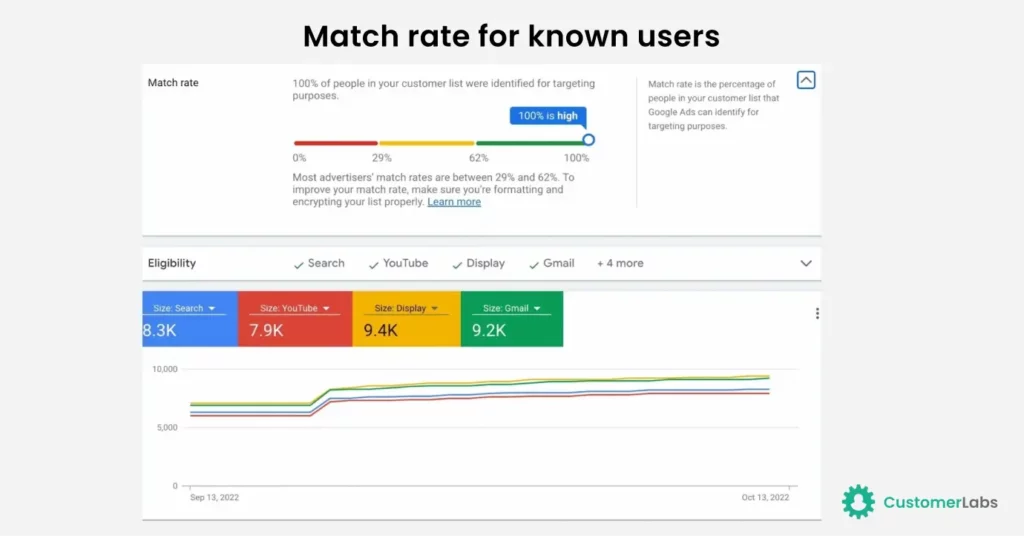
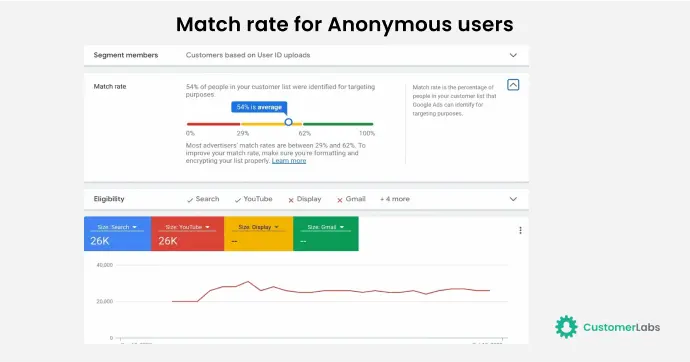
As per a report on conversion lift studies by Google, it was found that there was a lift in conversions by 12.5% when targeting the mid-funnel audience.
Strategies to Activate Your Messy Middle using First-Party Data
With an 80% match rate using your first-party data, you can strategize in various ways:
Budgeting – Mid funnel marketing strategy
To nurture the messy middle, you have to strategize your budget. Based on experiments, we recommend an ad budget split in the ratio 60:30:10. However, it varies from brand to brand & business to business.
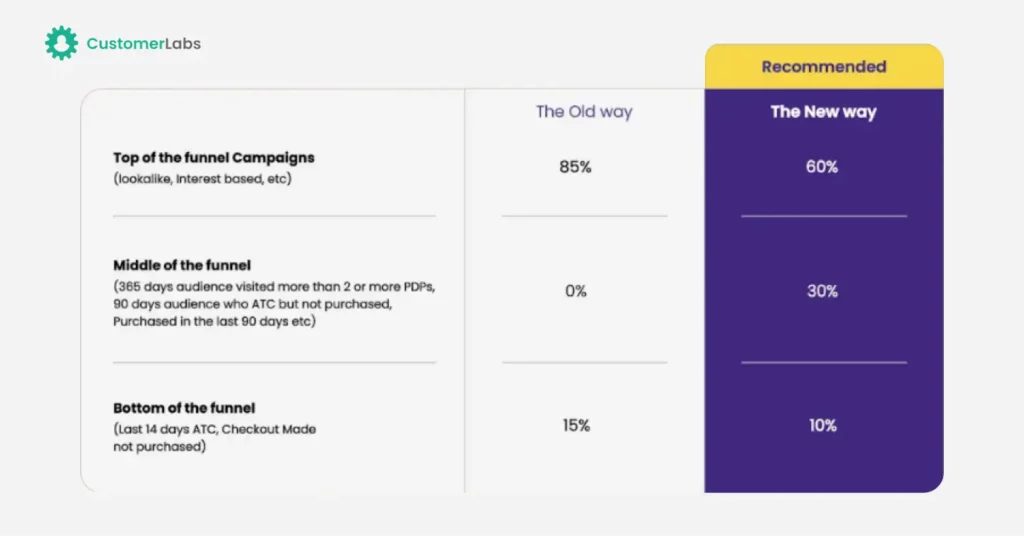
Advanced Audience Segmentation: For the Mid funnel marketing
You can create as many advanced audience segments as you want and run personalized ad campaigns like email campaigns, retargeting ad campaigns, etc.
For example, you can show ads to the user who is waiting for an XL T-shirt to be restocked.
Let’s say you’ve 100K visitors and around 2000 converts. We can now strategize to activate the remaining 98000. With smaller segments, it is possible to achieve smart personalization as well (people who are interested in red shirts, 10-inch shoes, etc).
Yearly Data ad Campaigns: Mid funnel marketing strategy
Reactivate your last year’s website visitors through offers & discounts for crucial periods like the holiday season, end-of-the-season sales, etc.
This will likely create an interest in them, sliding them to the bottom funnel. Data for more than 180 days is available only when you collect it. Facebook has a 180-day retention policy that deletes the data beyond 180 days & the user behavior data is available for the ad platform for not more than 28 days!
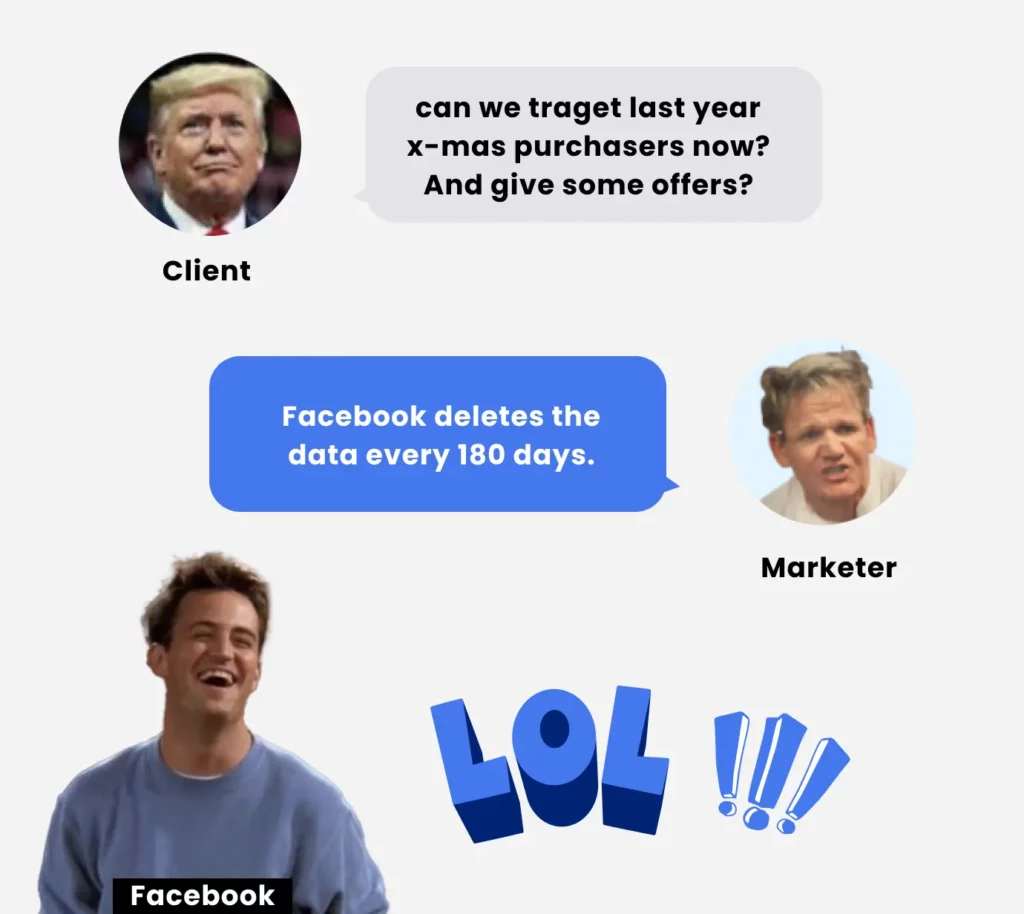
CustomerLabs 1PD Ops can help you to collect first-party data seamlessly with just a single line of code and saves the data forever. Therefore, you can bring in last year’s x-mas purchasers again back to the funnel.
For example, if Charlie purchased a cake for X-mas on 20th Dec 2021, you can re-warm and re-activate the funnel and tell, “It’s Xmas time, we are ready to serve you again”.

Mid-Funnel Marketing: Hidden box of treasure
Start collecting your first-party data to be ahead of your competitors as most eCommerce companies have already started collecting their website visitor data (known & unknown).
Moving ahead, along with the mid-funnel strategies, you can slowly scale your ad campaigns as per your wish and soon focus on full-funnel marketing with a particular focus on more than 95% anonymous website visitors therefore catering to all the stages of marketing funnel.
This mid-funnel audience is like an inexhaustible gold mine that you can re-target to increase your revenue. India’s leading fashion brand W for Woman increased its Return on Ad Spend (ROAS) by 30% using first-party data and a full-funnel marketing strategy to run a full funnel campaign.

